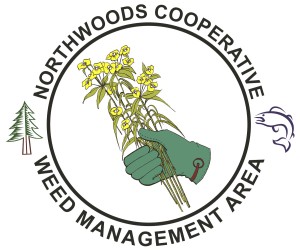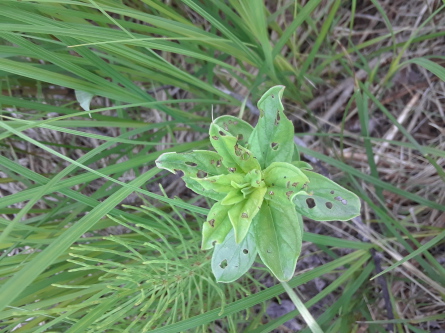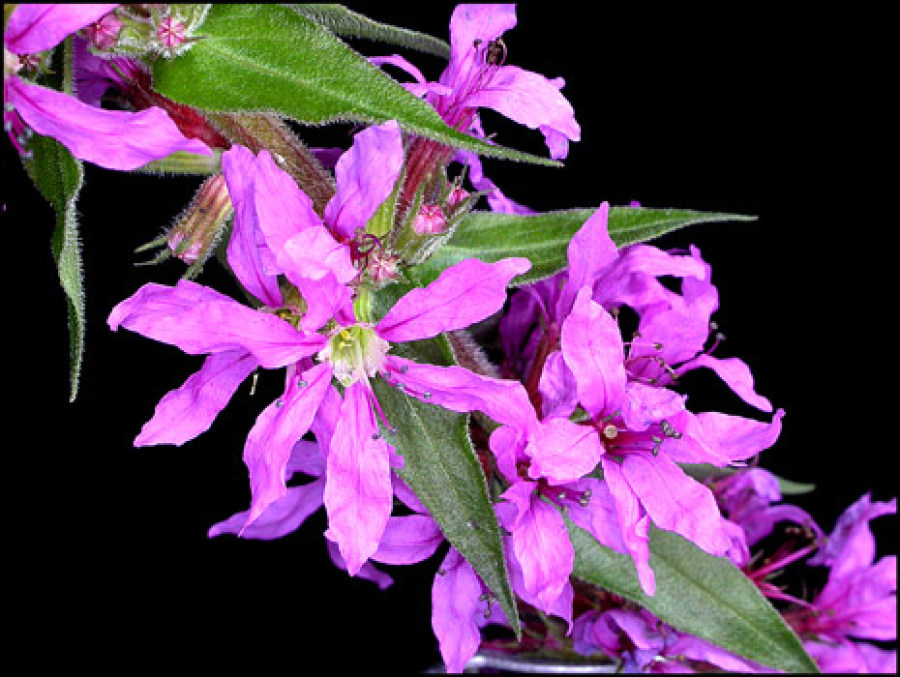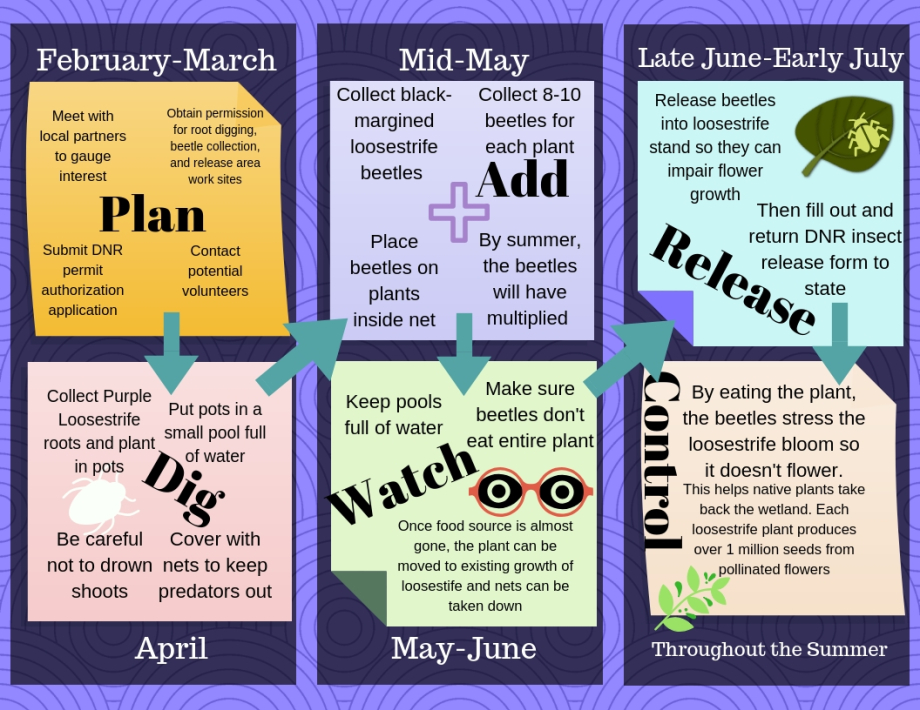Purple Loosestrife & Biological Control
Purple loosestrife (Lythrum salicaria) was brought from Europe for use as a medicinal herb, nectar source for bees, and an ornamental garden plant. Although purple loosestrife is beautiful, the plant can quickly take over wetlands, pushing out native species. Without the same predators that it has in Europe, purple loosestrife has a competitive advantange compared to many native species. Once established in a wetland it can takeover the landscape and become a monoculture.
Habitat: Plants prefer moist soil or wetland areas. It can often be found near rivers, lakes or streams and can endure flooding up to 1.5 feet of water.
Plant structure: Plants are herbaceous perrenials. They have a square-shaped stem, and grow to be 3-7 feet tall. They have a taproot with extensive rhizomes which can send out 30-50 shoots.
Leaves are lance-shaped, do not have teeth (are entire), and grow individually (simple leaves). The leaves typically grow opposite of each other along the stem and have no petiole. Each set of leaves are ninety degrees from the leaves above and below them on the stem.
Flowers are purple, irregular-shaped, and are arranged in a spike. The stalks of the plant are four-sided, and square shaped. Plants bloom from July-September.
Control: One loosestrife plant can produce 100,000-300,000 seeds per year so it is important to "nip it in the bud" and hand pull plants early in the season. Older plants can also be dug up, but roots should not be left behind. Pulled plants can then be burned or put in a landfill.
Biological Control: Long-term objective is to reduce the plant abundance in wetland habitats. Biological control, if effective, will reduce the impact of loosestrife on wetland flora and fauna. Loosestrife will not be eradicated from most wetlands where it presently occurs, but its abundance can be signicantly be reduced so that it is only a small component of the plant community, not a dominat one.
Leaf Beetles: The insects responsible for helping to manage the purple loosestrife population are two small leaf eating beetles, Galerucello calmariensis and G. pusila.
Check out the video below about the biocontrol project that the NCWMA did in 2020 with the Ashland and Bayfield Counties Land and Water Conservation Departments.
* In Wisconsin, it is illegal to sell, distribute, or cultivate purple loosestrife.
For information from the Wisconsin DNR: Click here.
For the Purple Loosestrife Factsheet from the UW Extension: Click here.
Sources:
Shelton, Anthony. Biological Control: A Guide to Natural Enemies in North America. https://biocontrol.entomology.cornell.edu/weedfeed/Galerucella.php. accessed (1/18/2024).





